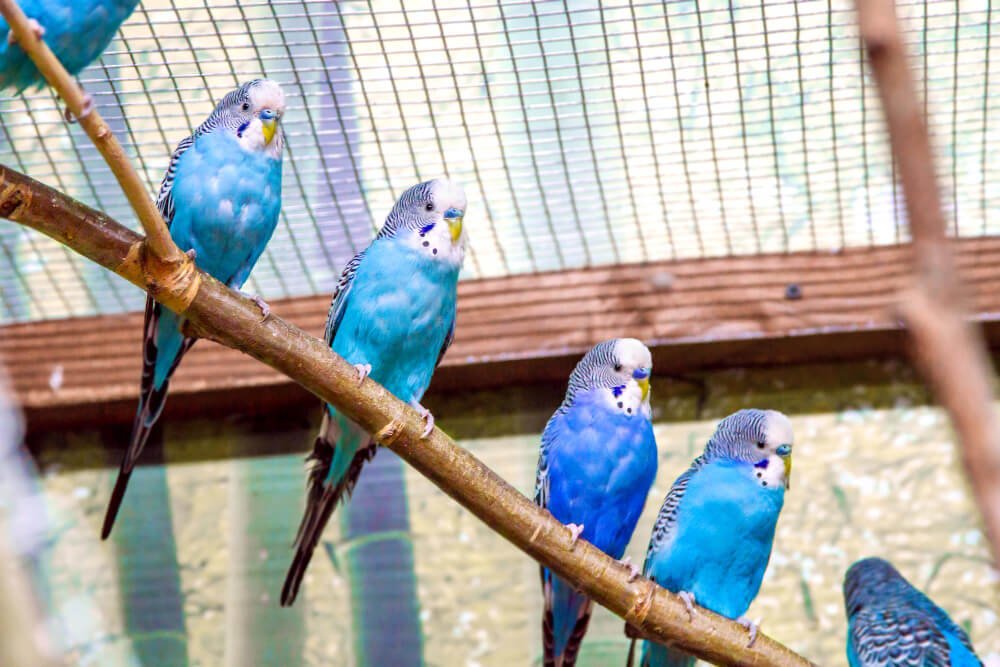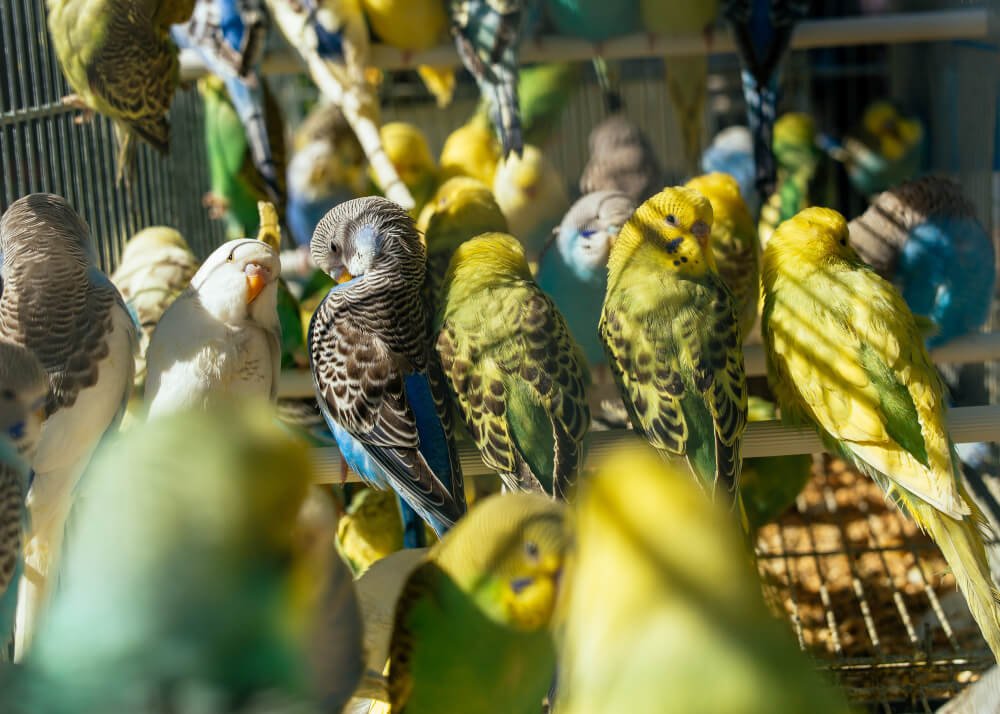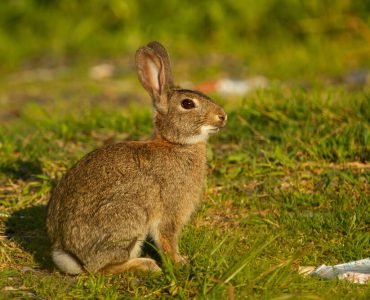The budgerigar, first identified in 1805, is one of the easiest birds to keep as a pet today. The budgerigar is the third most well-known domestic animal species in the world, after dogs and cats, due to its stunning colors.
Each bird is distinctive due to its wide range of hues and genetic variations, which provide lovely down combinations. If you’re interested in buying one, we’ve divided some facts regarding budgerigar hues and other information for your perusal.
What are the colors of the budgerigar?

The budgerigar (Melopsittacus undulatus), a native of the Australian outback, frequently inhabits grassland areas, grain-farming lands, and shrub habitats. Evolution was able to adapt to various conditions and settings thanks to adaptability.
This results in a great variety of colors and tones within the down for the species. These mutations are one of the characteristics that distinguish and distinguish each parakeet. There are several options, including purple, red, and white budgerigars.
The species is said to have originated with the pale green budgerigar. The bird is a recessive mutation if it is blue—each person’s dark element influences which of the three shades of these two colors they have.
Despite being the most widespread, the blue and green budgerigar can also be found in numerous hues and varieties. There are birds in a variety of shades:
- light or dark blue, yellow, and green
- a person with albinism with red eyes
- violet and white
- sky blue, yellow, and olive
- yellow and violet
- blue with a yellow face
- grey
- white with black
- yellow with green and black
Other characteristics of the budgerigar

As we have already discussed, other elements make the budgerigar so unique and present in pet owners’ hearts, in addition to the existence of a budgerigar rainbow. This species is sociable, dislikes solitude, and enjoys being around many people in a crowded setting.
As a result, keeping him from feeling lonely and stressed out is critical, which can lead to depression and even self-harm in parakeets. To ensure that this bird is never alone, it is crucial to raise it in pairs at all times.
Along with the budgerigar’s vibrant colors, one of its most distinguishing characteristics is its infectious singing. Singing is a sign of one’s health in addition to being beautiful. The healthier and happier the bird is, the more it will sing daily.
Critical care for raising a budgerigar

If you want a buddy like this at home, such as a white, blue, or any other color budgerigar, pay attention to some advice. By doing this, you ensure the animal’s health and welfare.
The budgerigar has a ten-year lifespan. Constant care and regular checkups to keep your health current are required for this to happen.
It requires regular maintenance to stay healthy, including cleaning the drinker and feeder frequently, maintaining the cage surroundings free of food remnants or mold, and keeping it in a well-ventilated area.
A balanced diet guarantees all the vitamins your pet needs to live a healthy life. His diet is fundamental and consists primarily of bird feed. Fruits like seedless apples, bananas, mangoes, and pears can also be added, along with leafy greens like endive, chicory, and spinach.
How much does it cost to keep a budgerigar?

Budgerigars are usually considered small parakeets because they generally weigh around 1.5-2 pounds and have a wingspan of about 4-5 inches. On the other hand, some budgerigars can weigh up to 3 pounds, so it is essential to consider their size when calculating their care.
When it comes to the costs of keeping a budgerigar, one of the most important factors to consider is their cage size. A budgerigar needs at least a 24-inch square cage with a 12-inch height and 10-inch width (or equivalent). This will give your bird enough room to fly, perch, and play. It is also essential to ensure the cage has a sturdy base that cannot be easily tipped over, as this could lead to your bird becoming injured or even killed.
Another cost you may need to factor in is the price of food and water. Budgerigars require a diet that includes seeds, nuts, fruits, and vegetables. Therefore, buying high-quality food that meets your bird’s specific dietary needs is essential. In addition to food, your bird will also need waterfalls and toys.





Add comment